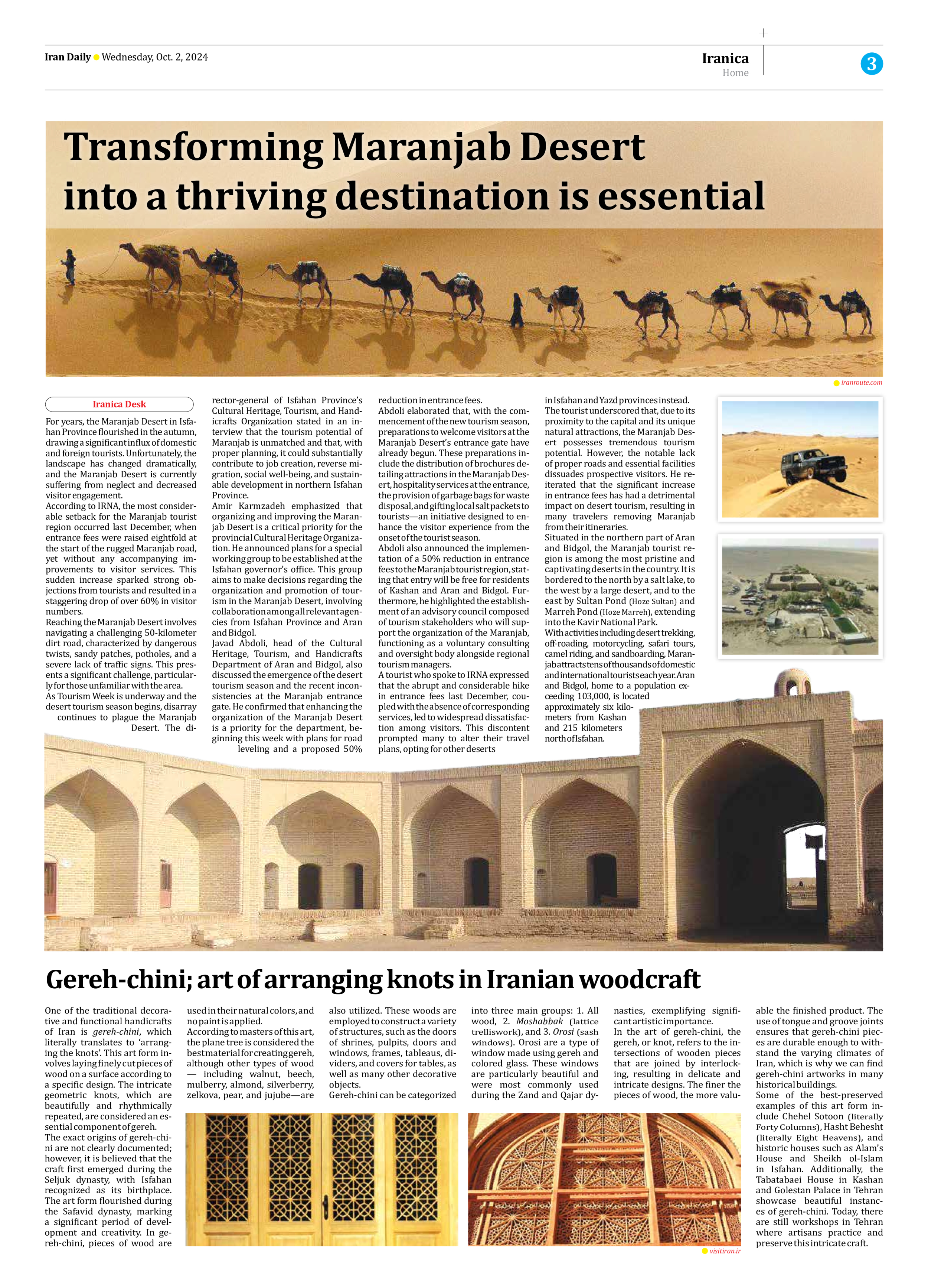
Transforming Maranjab Desert into a thriving destination is essential
For years, the Maranjab Desert in Isfahan Province flourished in the autumn, drawing a significant influx of domestic and foreign tourists. Unfortunately, the landscape has changed dramatically, and the Maranjab Desert is currently suffering from neglect and decreased visitor engagement.
According to IRNA, the most considerable setback for the Maranjab tourist region occurred last December, when entrance fees were raised eightfold at the start of the rugged Maranjab road, yet without any accompanying improvements to visitor services. This sudden increase sparked strong objections from tourists and resulted in a staggering drop of over 60% in visitor numbers.
Reaching the Maranjab Desert involves navigating a challenging 50-kilometer dirt road, characterized by dangerous twists, sandy patches, potholes, and a severe lack of traffic signs. This presents a significant challenge, particularly for those unfamiliar with the area.
As Tourism Week is underway and the desert tourism season begins, disarray continues to plague the Maranjab Desert. The director-general of Isfahan Province’s Cultural Heritage, Tourism, and Handicrafts Organization stated in an interview that the tourism potential of Maranjab is unmatched and that, with proper planning, it could substantially contribute to job creation, reverse migration, social well-being, and sustainable development in northern Isfahan Province.
Amir Karmzadeh emphasized that organizing and improving the Maranjab Desert is a critical priority for the provincial Cultural Heritage Organization. He announced plans for a special working group to be established at the Isfahan governor’s office. This group aims to make decisions regarding the organization and promotion of tourism in the Maranjab Desert, involving collaboration among all relevant agencies from Isfahan Province and Aran and Bidgol.
Javad Abdoli, head of the Cultural Heritage, Tourism, and Handicrafts Department of Aran and Bidgol, also discussed the emergence of the desert tourism season and the recent inconsistencies at the Maranjab entrance gate. He confirmed that enhancing the organization of the Maranjab Desert is a priority for the department, beginning this week with plans for road leveling and a proposed 50% reduction in entrance fees.
Abdoli elaborated that, with the commencement of the new tourism season, preparations to welcome visitors at the Maranjab Desert’s entrance gate have already begun. These preparations include the distribution of brochures detailing attractions in the Maranjab Desert, hospitality services at the entrance, the provision of garbage bags for waste disposal, and gifting local salt packets to tourists—an initiative designed to enhance the visitor experience from the onset of the tourist season.
Abdoli also announced the implementation of a 50% reduction in entrance fees to the Maranjab tourist region, stating that entry will be free for residents of Kashan and Aran and Bidgol. Furthermore, he highlighted the establishment of an advisory council composed of tourism stakeholders who will support the organization of the Maranjab, functioning as a voluntary consulting and oversight body alongside regional tourism managers.
A tourist who spoke to IRNA expressed that the abrupt and considerable hike in entrance fees last December, coupled with the absence of corresponding services, led to widespread dissatisfaction among visitors. This discontent prompted many to alter their travel plans, opting for other deserts in Isfahan and Yazd provinces instead.
The tourist underscored that, due to its proximity to the capital and its unique natural attractions, the Maranjab Desert possesses tremendous tourism potential. However, the notable lack of proper roads and essential facilities dissuades prospective visitors. He reiterated that the significant increase in entrance fees has had a detrimental impact on desert tourism, resulting in many travelers removing Maranjab from their itineraries.
Situated in the northern part of Aran and Bidgol, the Maranjab tourist region is among the most pristine and captivating deserts in the country. It is bordered to the north by a salt lake, to the west by a large desert, and to the east by Sultan Pond (Hoze Sultan) and Marreh Pond (Hoze Marreh), extending into the Kavir National Park.
With activities including desert trekking, off-roading, motorcycling, safari tours, camel riding, and sandboarding, Maranjab attracts tens of thousands of domestic and international tourists each year. Aran and Bidgol, home to a population exceeding 103,000, is located approximately six kilometers from Kashan and 215 kilometers north of Isfahan.







